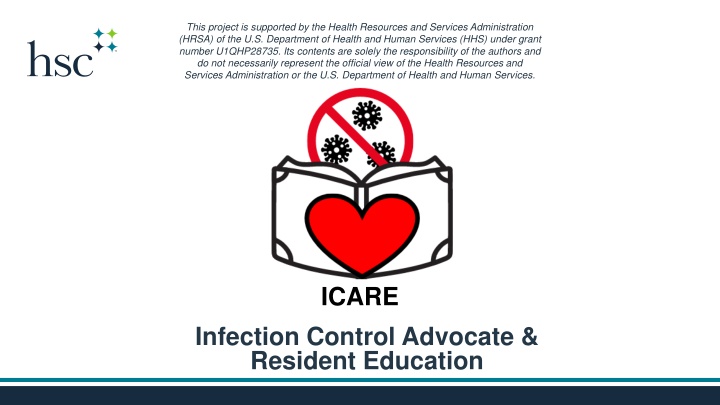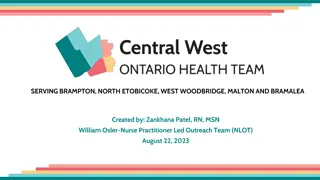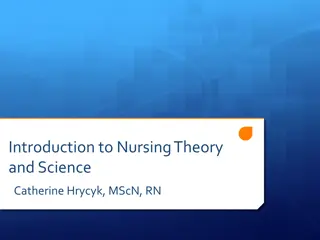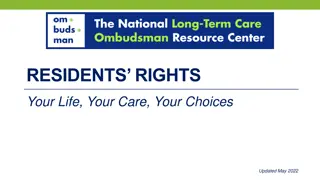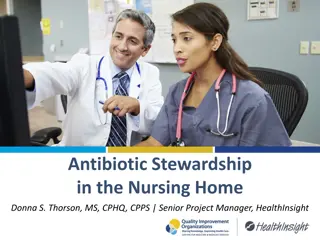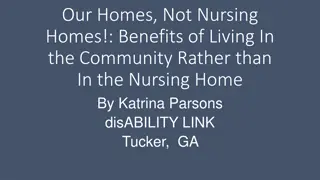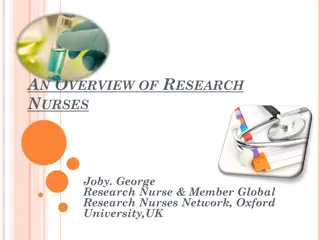Infection Control and Resident Education in Nursing Homes
This project, supported by Health Resources and Services Administration (HRSA), aims to educate and advocate for infection control in nursing homes. The focus is on preventing the spread of germs, safeguarding the environment, and empowering residents to protect their health rights. Through informative materials and collaborative efforts, the program addresses common infections, germ transmission, and strategies for maintaining a safe nursing home environment.
Download Presentation

Please find below an Image/Link to download the presentation.
The content on the website is provided AS IS for your information and personal use only. It may not be sold, licensed, or shared on other websites without obtaining consent from the author.If you encounter any issues during the download, it is possible that the publisher has removed the file from their server.
You are allowed to download the files provided on this website for personal or commercial use, subject to the condition that they are used lawfully. All files are the property of their respective owners.
The content on the website is provided AS IS for your information and personal use only. It may not be sold, licensed, or shared on other websites without obtaining consent from the author.
E N D
Presentation Transcript
This project is supported by the Health Resources and Services Administration (HRSA) of the U.S. Department of Health and Human Services (HHS) under grant number U1QHP28735. Its contents are solely the responsibility of the authors and do not necessarily represent the official view of the Health Resources and Services Administration or the U.S. Department of Health and Human Services. ICARE Infection Control Advocate & Resident Education
Infection Control Advocate and Resident Education Safeguarding the Nursing Home Environment
A fall morning at the Springville Nursing Home...
Learning Together Common infections Germs spread Prevent spread
Working Together Do certain germs spread more easily in nursing homes? What is being done to keep the nursing home environment safe?
What Will I Learn? Why do certain germs spread more easily in nursing home communities? What steps can be taken in the nursing home environment to stop the spread of infections? How can being informed and involved respect resident rights while preventing and controlling infections?
Germs and the Environment Susceptible people Shared spaces, shared germs Home, not a hospital Products and practices Hardy and resistant germs All of the above!
Unique and Tough Germs Perfect people, places, and practices for pathogens! Adapt Adapt to conditions Survive on surfaces for long periods Survive Multi-drug resistant organisms (MDROs) Resist
Germ Spread (Transmission) Direct Contact Hugs, kisses, hands Large drops Coughs & sneezes Objects in our environment Objects to hands to our eyes, nose, mouth, broken skin Air Very, very small droplets carrying germs long distances and time Indirect Indirect Objects in our environment Objects to hands to our eyes, nose, mouth, broken skin Air Very, very small droplets carrying germs long distances and time
Indirect Spread: Nursing Home Environment Care Equipment Household Surfaces
Indirect Spread: Nursing Home Environment Blood pressure cuffs Minimal Touch Floors Stethoscopes Ceilings Mobile monitors/Med carts Frequent Touch Doorknobs Therapy equipment Call lights Lots of contact!! Bedrails Laundry
Safeguarding the Nursing Home Environment Sterilization Sterilization Sterilization Disinfection Disinfection Disinfection Cleaning Cleaning Cleaning
Cleaning All items in nursing home community!! Sterilization Soap or detergent, water, and friction Some germ removal Disinfection Removes dirt and debris for disinfection Cleaning Does NOT mean germs killed or surface is free of all germs
Disinfection All resident care & frequently touched items! Sterilization Disinfectants Different types/strength levels (low, intermediate, high) Disinfection Destroys most germs Cleaning Does NOT mean surface is free of all germs
Sterilization Objects that enter certain places in the body Sterilization Needles, catheters Disinfection Pressure/steam, or chemicals Destroys ALL germs and forms of germs Cleaning
Routine Cleaning Process Cleaning needed for disinfection and sterilization Combine cleaning and disinfection Best practice- keep a pattern! Work from top to bottom, clean to dirty One area to another Cleaning cloth use per room Avoid skipping & recontamination
Policies, Procedures, and Products Policies & Procedures Routine cleaning & disinfection Resident care, high touch, special soiled Single-use, single resident items (insulin pens, blood glucose monitor) Written, reviewed, education, checked Products Hospital-grade, approved Specific kill and contact claim Ease of use and safety
Checks and Balances (Surveillance) Balance procedures and practices Routine, ongoing, collection of information for improvement Surveillance Not punishment! Progress not perfection! Outcome Surveillance Infection Clusters Monitor: certain germs, antibiotic orders Process Surveillance Cleaning and Disinfection Monitor: observations, markers, amount of possible germs
Quality Care & Resident Rights Certain germs Quality Protect nursing home environment Infection Prevention & Control Infection Prevention & Control Resident Rights Informed and Involved Resident Rights
Resident & Advocate: Rights & Responsibilities Informed Policies & procedures Practices Involved Education Plan Policies & Procedures
Nursing Home Requirements: Infection Prevention & Control Infection control policies and procedures based on recognized guidelines Strong Infection Prevention and Control Program As needed and at least annually, review and revise based on changes to resident infection risk Federal and State Law Requirements Consider changes or trends within the nursing home and general community which may change resident infection risk
Ms. Johnson and Mr. Moore Informed Cleaning and disinfection policies and practices Monitoring Involved Education regarding cleaning and disinfection
Discussion Have you seen any practices in this nursing home that are different than what you learned in this lesson? What are those practices? Have you been involved in education regarding your role in preventing the spread of germs in this nursing home? What role do you think residents play in keeping the nursing home environment safe from germ spread?
Advocacy: Next Steps Education Nursing home specific risk assessment Nursing home specific policies and procedures Engagement Resident or family council to review policies and monitoring Empowerment Quality assurance and assessment committee (QAA committee) Resident and/or family member role in monitoring
This project is supported by the Health Resources and Services Administration (HRSA) of the U.S. Department of Health and Human Services (HHS) under grant number U1QHP28735. Its contents are solely the responsibility of the authors and do not necessarily represent the official view of the Health Resources and Services Administration or the U.S. Department of Health and Human Services. https://www.unthsc.edu/center-for-geriatrics/education-programs/icare/ ICARE Infection Control Advocate & Resident Education
